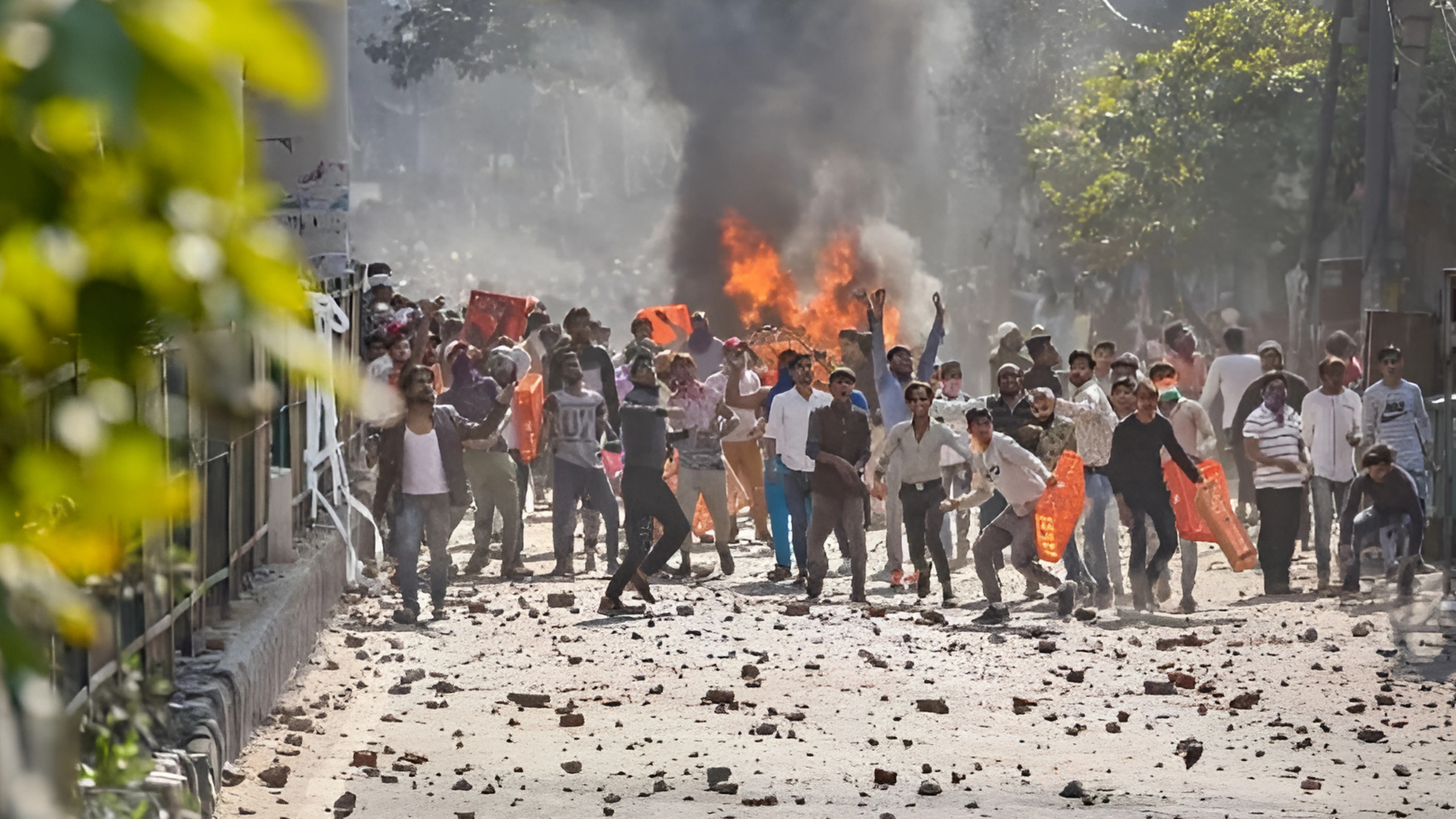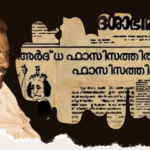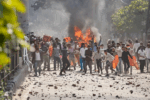The coastal belt of Karnataka, a region renowned for its breathtaking landscapes, rich cultural heritage, and thriving economy, stretches along the Arabian Sea, encompassing districts such as Dakshina Kannada, Udupi, and Uttara Kannada. This area, often referred to as the Konkan coast, has historically been a melting pot of diverse communities, where Hindus, Muslims, Christians, and others have coexisted for centuries, their lives intertwined through trade, festivals, and shared traditions. Yet, beneath this veneer of harmony lies a troubling and persistent reality: coastal Karnataka has emerged as a hotspot for communal violence and hate crimes, where tensions between Hindus and Muslims have escalated over the decades, frequently erupting into violent confrontations that threaten the region’s social fabric. In recent months, the situation has reached a critical juncture, with a series of murders, stabbings, and inflammatory incidents prompting the Karnataka government to establish an Anti-Communal Force to curb the rising tide of hate-driven violence. This article explores the historical roots of communal strife in coastal Karnataka, examines the recent incidents that have intensified the crisis, and analyzes the complex interplay of factors fueling this enduring conflict, from political motivations to economic disparities and social divisions.
The origins of communal tensions in coastal Karnataka can be traced back to the colonial period and the seismic event of India’s partition in 1947, a cataclysmic moment that reshaped the subcontinent’s social and political landscape. The partition, which resulted in the deaths of over two million people and displaced millions more, left a legacy of mistrust and animosity between Hindus and Muslims, a wound that has yet to fully heal. In coastal Karnataka, this national trauma was compounded by local historical narratives, particularly those surrounding the rule of Tipu Sultan, the 18th-century ruler of Mysore. Tipu, often celebrated as a freedom fighter who resisted British colonialism, is vilified by some Hindu nationalist groups as a symbol of Muslim oppression, a narrative that oversimplifies his complex legacy and ignores his contributions to the region’s development. This selective historical memory has been weaponized over the years, deepening communal divides and providing ideological fodder for groups seeking to assert Hindu dominance in the region. The rise of Hindutva ideology in the 20th century, spearheaded by organizations like the Rashtriya Swayamsevak Sangh (RSS), found a receptive audience in coastal Karnataka, where economic and social dynamics further exacerbated tensions.
Unlike many other parts of India, the Muslim community in coastal Karnataka is not only numerically significant—constituting a substantial portion of the population in districts like Dakshina Kannada—but also economically assertive. Muslims in the region have historically excelled in trade, education, and entrepreneurship, often outpacing their Hindu counterparts in terms of wealth and social mobility. This economic disparity has fostered resentment among some sections of the Hindu population, particularly among upper-caste groups who perceive their traditional dominance as being challenged. Activists have pointed out that this economic rivalry has been skillfully channeled into communal hatred by Hindutva organizations, which portray Muslims as a threat to Hindu identity and prosperity. The region’s caste dynamics have also played a role, as the Sangh Parivar’s upper-caste leadership has struggled to fully integrate lower-caste Hindus into its fold, creating a complex web of social hierarchies intertwined with religious polarization. These underlying tensions set the stage for the communal conflicts that would intensify in the late 20th and early 21st centuries, transforming coastal Karnataka into a battleground for competing communal ideologies.
The 1990s marked a significant turning point for communal relations in coastal Karnataka, as the rise of Hindutva politics coincided with the emergence of Islamic fundamentalist groups, creating a volatile environment of “competitive communalism.” The demolition of the Babri Mosque in Ayodhya in 1992 by Hindu nationalists, an event that triggered nationwide riots and resulted in at least 1200 deaths, had a profound impact on the region, deepening the fault lines between Hindus and Muslims. In coastal Karnataka, this period saw a sharp increase in communal incidents, often linked to electoral cycles, as political parties sought to exploit religious sentiments for electoral gains. Data compiled by activists over the years reveals a disturbing pattern: communal violence tends to spike in election years, a trend attributed to the deliberate use of polarization as a political strategy. The growth of the Bharatiya Janata Party (BJP) in the region, which has dominated coastal Karnataka electorally—winning 17 out of 19 seats in the 2018 assembly elections—further entrenched this dynamic, as the party’s rhetoric and policies often amplified communal tensions.
Over the past two decades, coastal Karnataka has witnessed a steady stream of communal incidents, ranging from moral policing and hate speech to cattle vigilantism and targeted killings. In 2021, the region recorded 120 communal incidents, the highest in four years at the time, with 33 cases of moral policing by Hindu vigilante groups and four by Muslim vigilante groups. The following year saw 174 incidents, and the peak came in 2015, with 228 recorded cases, reflecting the intensity of the communal divide. These incidents often followed a familiar script: Hindu vigilante groups targeting interfaith couples under the guise of preventing “Love Jihad,” a conspiracy theory alleging that Muslim men seduce Hindu women to convert them; attacks on Muslims accused of transporting cattle, often based on unfounded rumors; and retaliatory violence by Muslim groups in response to perceived injustices. By 2024, the number of communal incidents in Dakshina Kannada and Udupi had dropped to 50, the lowest in 14 years, suggesting a possible de-escalation. However, this decline was deceptive, as the nature of violence shifted toward more insidious forms, such as hate speech and online incitement, with 27 reported incidents of hate speech in 2024, 15 of which were attributed to Hindu fundamentalist groups.
The year 2025 has brought a renewed wave of violence to coastal Karnataka, shattering the fragile calm of the previous year and underscoring the deep-rooted nature of the region’s communal tensions. In the past month, the region has been rocked by a series of violent incidents, including three murders and multiple stabbings, all linked to communal motives. The cycle of violence began with the murder of Ashraf, a Muslim youth, in Mangaluru, an incident that sent shockwaves through the community. This was followed by the killing of Suhas Shetty, a Hindu activist, in the same city, prompting the Karnataka government to establish the Anti-Communal Force, a specialized unit aimed at curbing communal violence through enhanced intelligence and surveillance. Shetty’s murder triggered a wave of retaliatory attacks, with three Muslim men targeted in separate incidents, including the brutal lynching of Abdul Rahiman. These incidents have reignited fears among residents, many of whom lament the transformation of coastal Karnataka from a region known for its communal harmony to a battleground marked by hatred and violence. The role of social media in exacerbating the crisis cannot be overstated, as Hindutva groups have increasingly turned to online platforms to spread inflammatory messages, further fueling the cycle of violence.
Analyzing the communal violence in coastal Karnataka requires a nuanced understanding of the multiple factors at play, starting with the role of political actors. The BJP’s dominance in the region has been accompanied by policies and actions that have emboldened right-wing vigilante groups. Between 2019 and 2023, the BJP-led state government withdrew prosecution in 182 cases of hate speech, cow vigilantism, and communal violence, a move that critics argue has granted impunity to perpetrators and encouraged further violence. At the same time, Islamic organizations have also contributed to the cycle of violence through retaliatory actions, as seen in the tit-for-tat killings of Deepak Rao, an RSS worker, and Basheer, a Muslim trader, in 2018. The involvement of local gangsters with affiliations to both Hindutva groups and Islamic outfits has added another layer of complexity, with some of these criminal elements reportedly backed by foreign-based figures who fund communal activities. This nexus of politics, crime, and religion has created a volatile environment where violence often erupts with little provocation.
Economic and social factors are equally critical in understanding the persistence of communal strife in coastal Karnataka. The economic disparity between Muslims and Hindus, with Muslims often enjoying greater prosperity due to their success in trade and education, has been a source of tension, particularly among upper-caste Hindu elites who feel their traditional dominance is under threat. This economic rivalry has been exploited by Hindutva organizations, which frame Muslims as an existential threat to Hindu identity and livelihoods. The region’s caste dynamics further complicate the situation, as the Sangh Parivar’s upper-caste leadership has struggled to fully integrate lower-caste Hindus, many of whom are beginning to question the caste hierarchies within the organization. Some observers argue that this growing awareness among younger generations has reduced the number of foot soldiers willing to engage in overt violence, but the entrenched hatred continues to manifest through other means, such as hate speech and symbolic acts of aggression. For instance, in 2023, a Muslim youth was dragged off a bus and assaulted for traveling with a Hindu woman, an incident that highlights the pervasive nature of communal prejudice.
The role of law enforcement and the state in addressing communal violence has been a subject of intense scrutiny. The Karnataka Police have faced criticism for their failure to crack down on vigilante groups, with activists pointing to a deep-seated bias within the force itself. This bias, often described as a “flawed morality and communalism,” has undermined efforts to maintain law and order, allowing perpetrators to act with impunity. Past state responses have been largely reactive, such as the short-lived ban on male pillion riders in Dakshina Kannada in 2022, which was lifted after proving ineffective. The establishment of the Anti-Communal Force in 2025 represents a more proactive approach, with the unit tasked with gathering intelligence, monitoring social media for hate speech, and responding swiftly to communal incidents. However, its success will depend on the government’s willingness to address the systemic issues within the police force and hold all perpetrators accountable, regardless of their political affiliations.
From a societal perspective, the communal divide in coastal Karnataka has eroded the region’s once-vibrant social cohesion. The growing segregation between communities is evident in everyday life, with children of different religious backgrounds no longer mingling as they once did. Linguistic divides have also widened, with Muslims primarily speaking Beary and Hindus speaking Tulu, further reinforcing social barriers. This social apartheid, as some activists have termed it, is perpetuated through practices like economic boycotts, attacks on religious freedoms, and the enforcement of segregation in public spaces, all of which undermine the constitutional principle of fraternity. The erosion of trust between communities has been exacerbated by the proliferation of hate speech, which often circulates unchecked on social media platforms, sowing seeds of discord and fear.
The communal violence in coastal Karnataka is a multifaceted crisis, rooted in historical resentments, fueled by political opportunism, and sustained by economic and social divisions. While the decline in overt violence in 2024 offered a glimmer of hope, the recent spate of murders and stabbings in 2025 serves as a stark reminder of the deep-seated hatred that continues to plague the region. Addressing this crisis will require more than just law enforcement measures; it demands a comprehensive approach that tackles the structural roots of communalism, from countering hate speech and holding political actors accountable to fostering dialogue and reconciliation between communities. Coastal Karnataka stands at a crossroads, its future hanging in the balance. The path to healing will be long and arduous, but the stakes are immense—not just for the region, but for India’s broader commitment to secularism, harmony, and the ideals enshrined in its Constitution. If the shadows of division are to be dispelled, it will take a collective effort to confront the forces of hate and rebuild the bonds of trust that once defined this vibrant coastal land.







